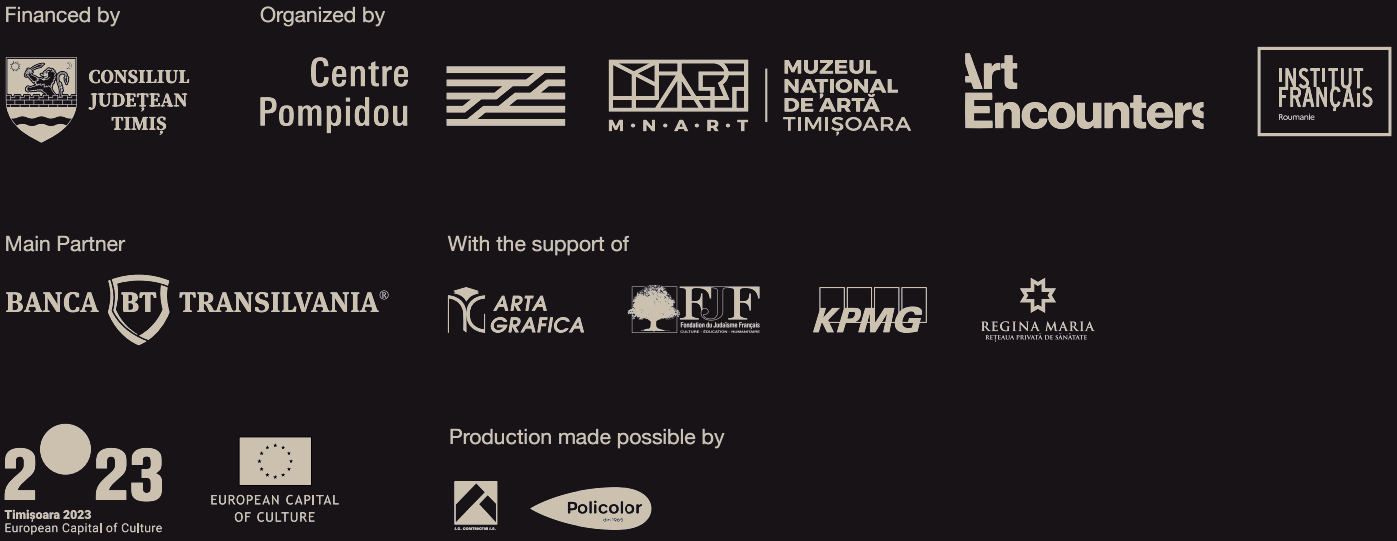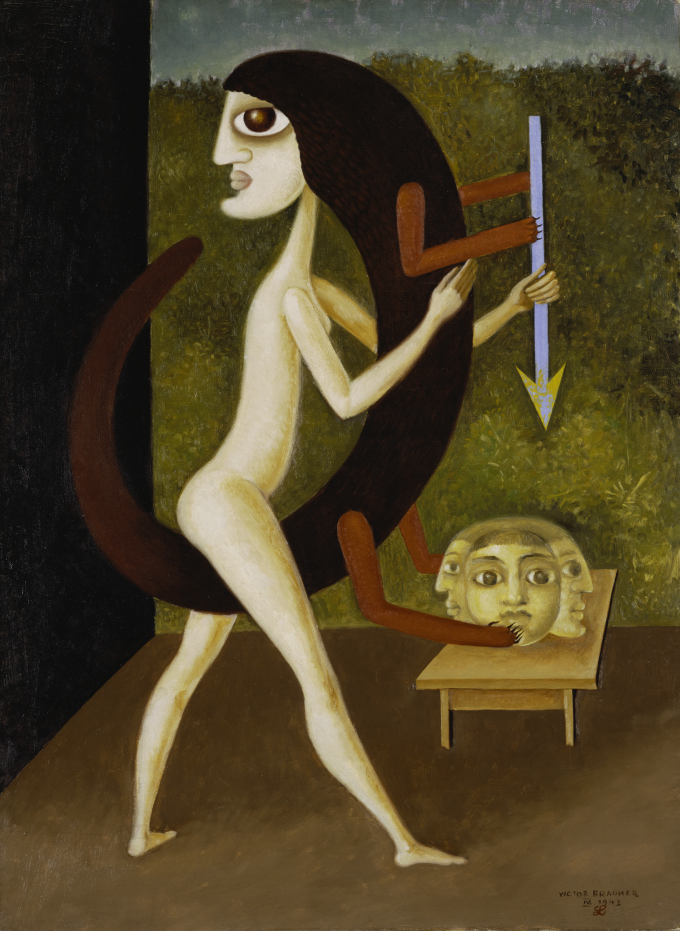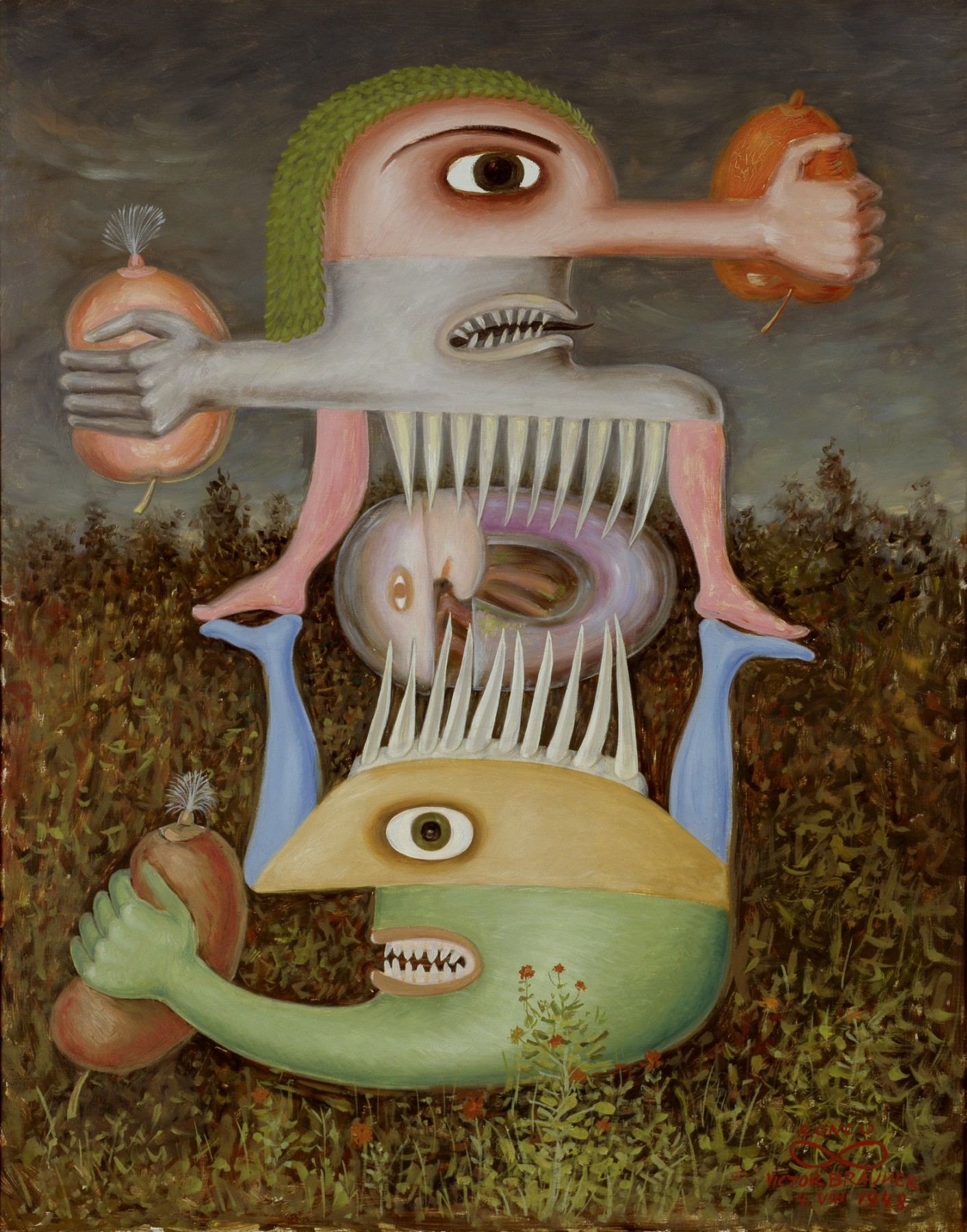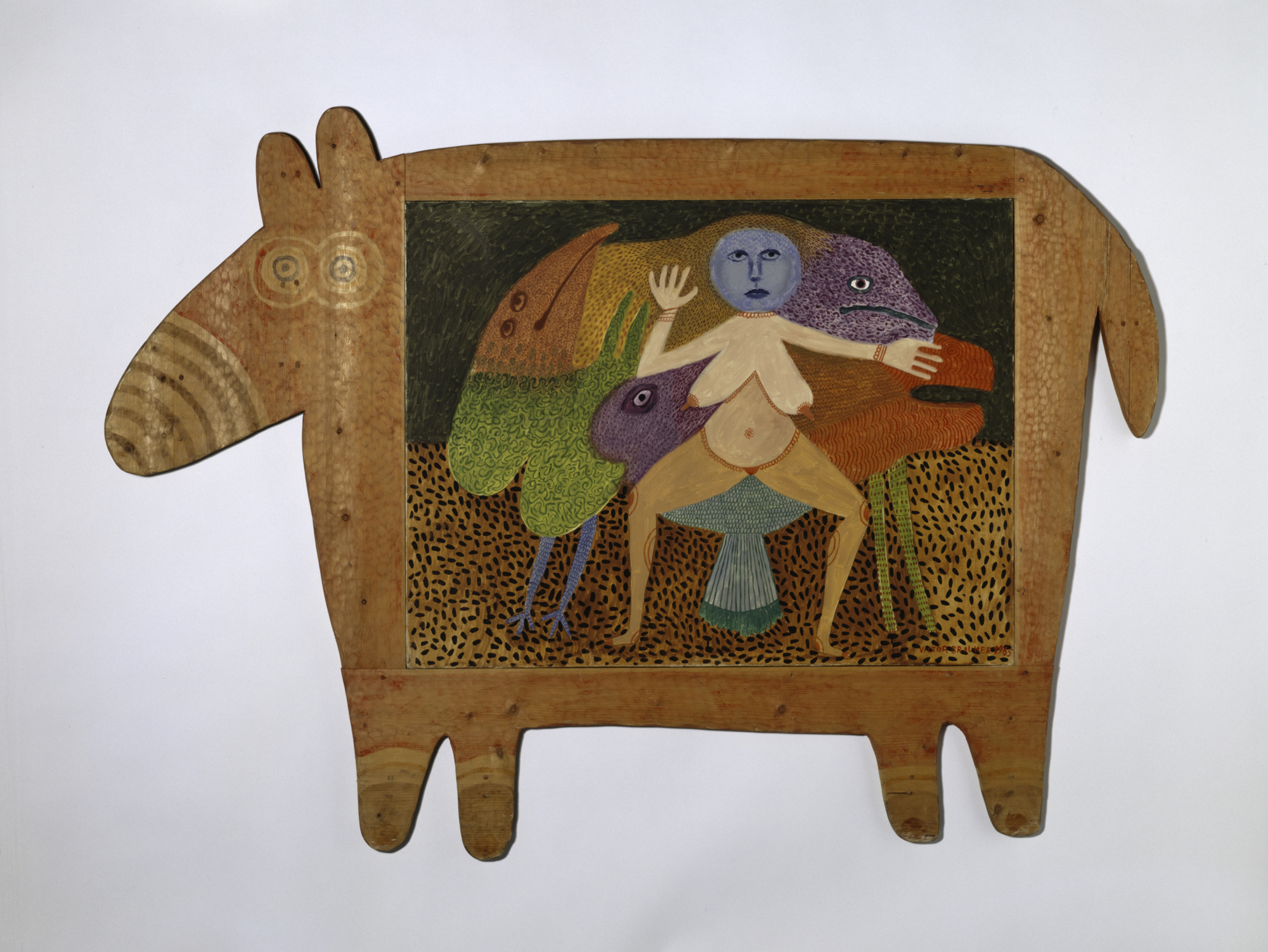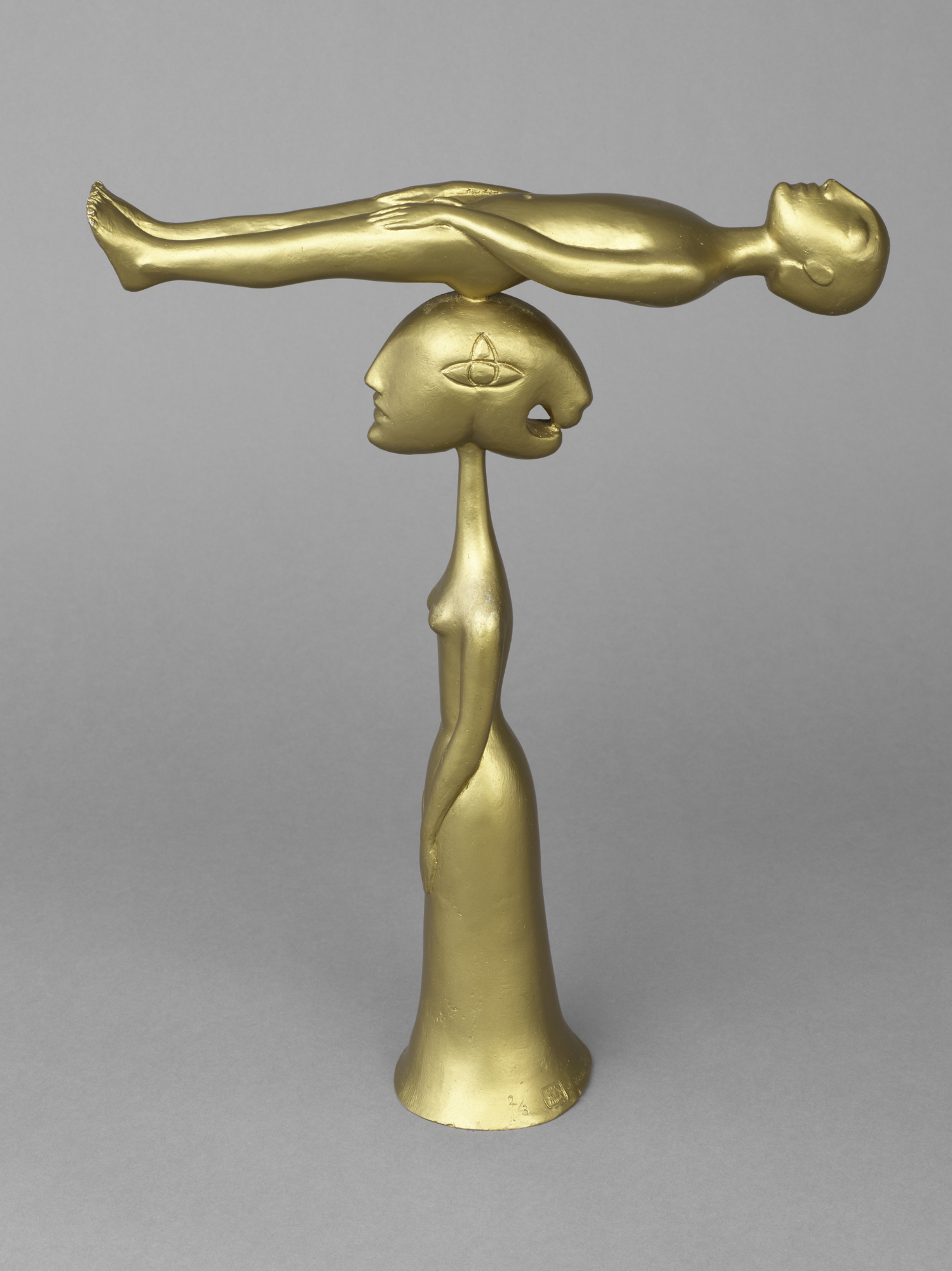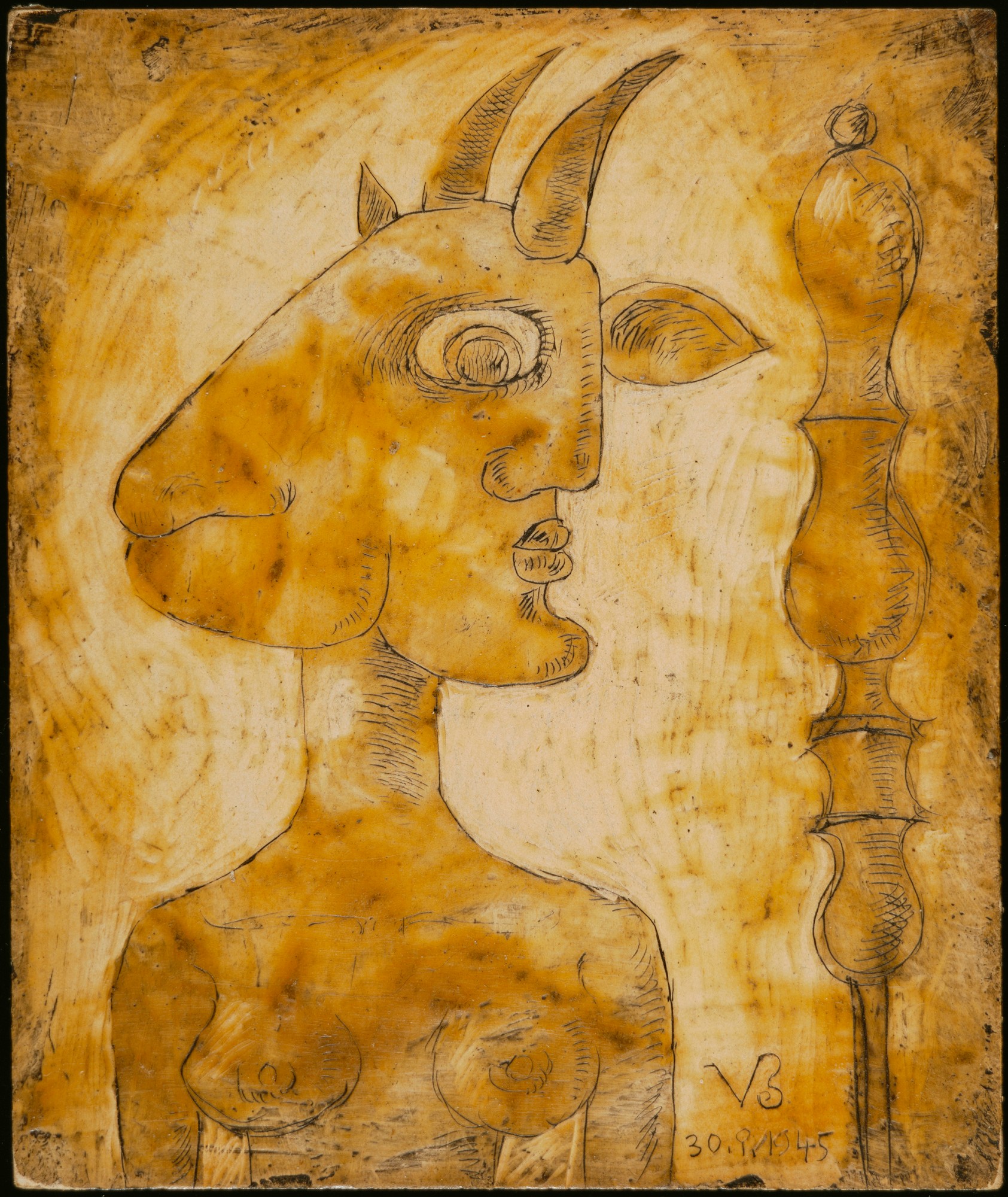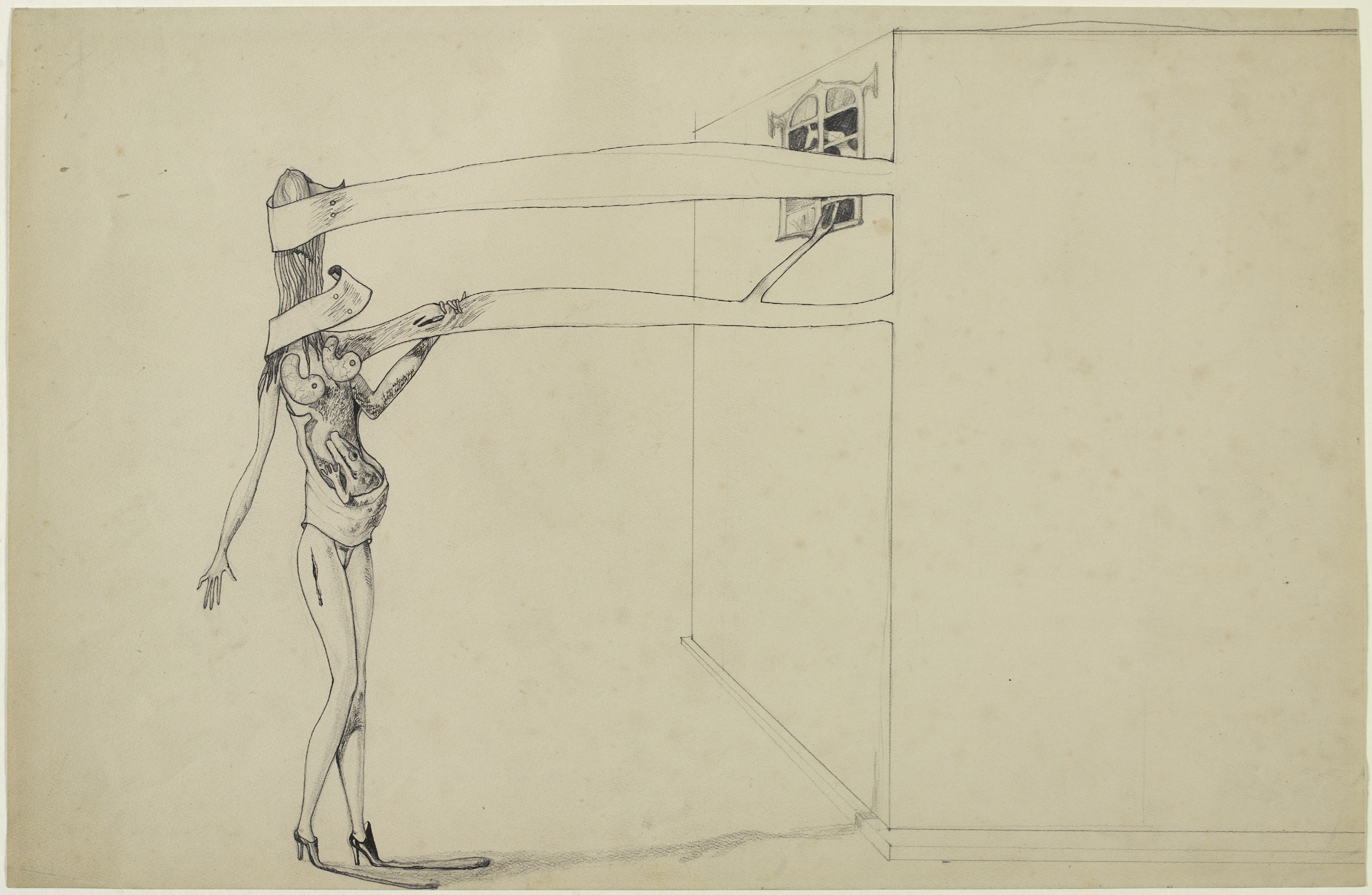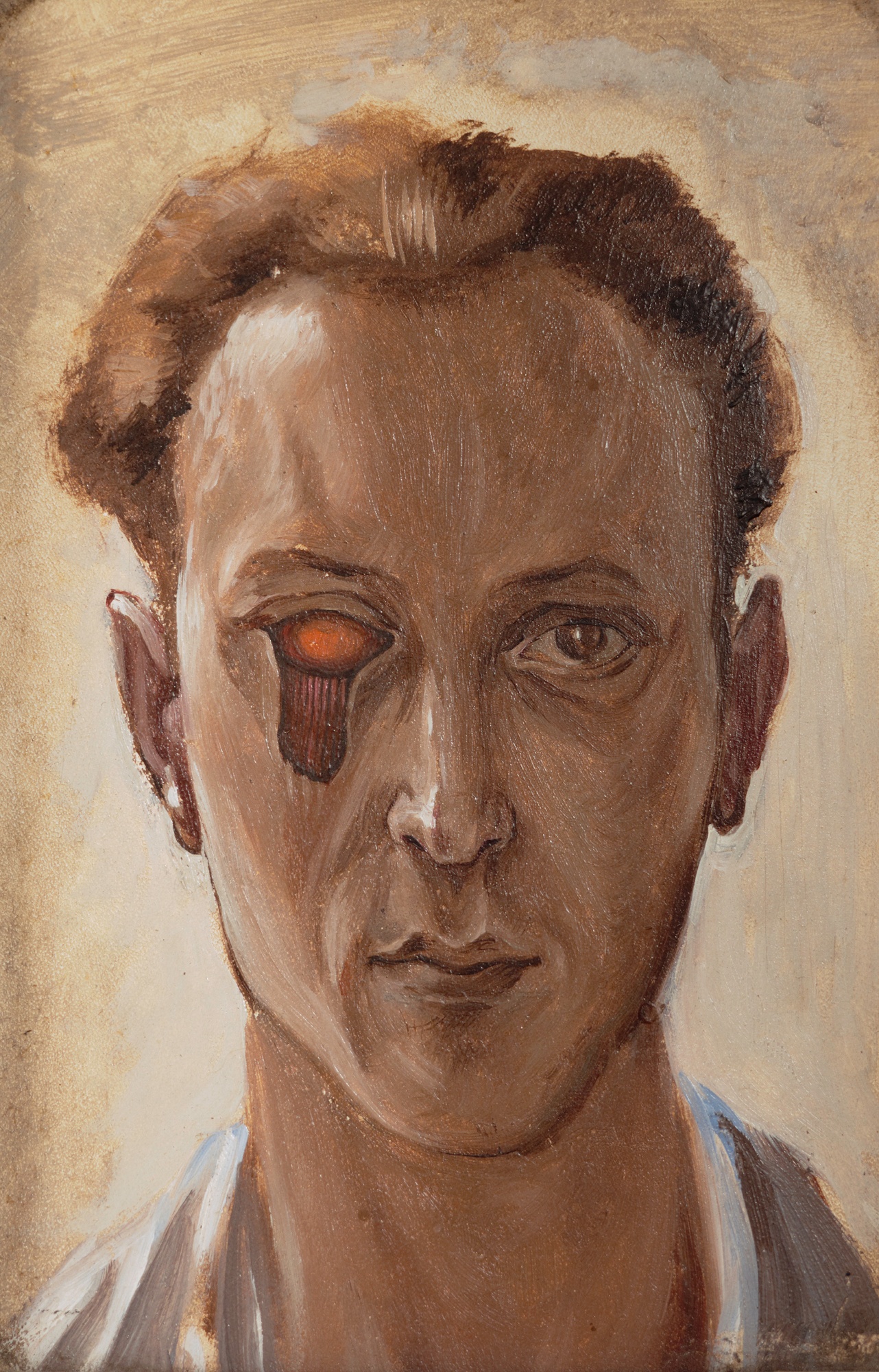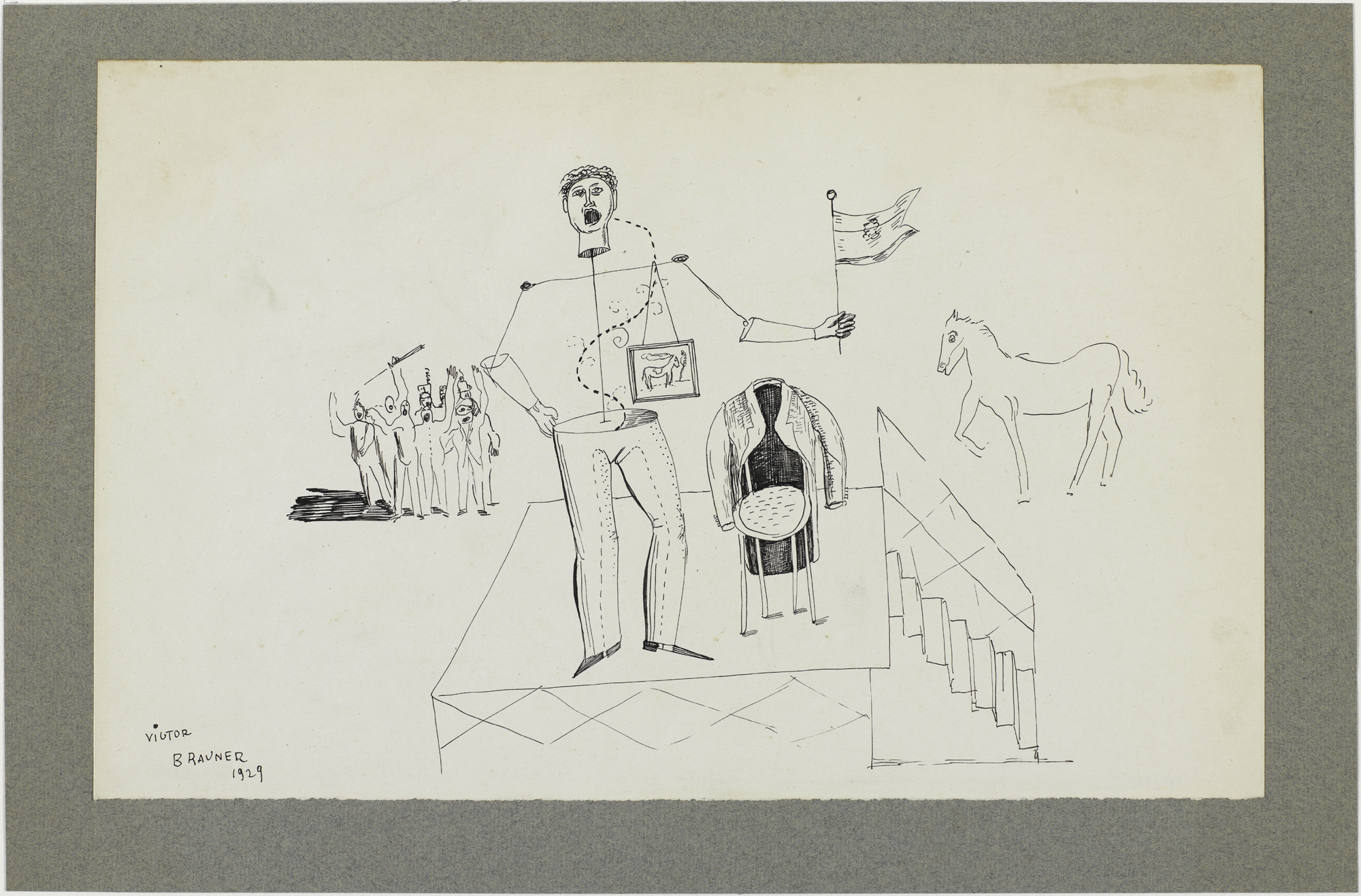



Victor Brauner, Stable unstable, plain of Théus, April 1942, oil on canvas 73 x 54 cm;
© Centre Pompidou, Paris (MNAM-CCI); State purchase in 1951. Allocation in 1951 INV. AM 3091 P;
On the occasion of the European Capital of Culture – Timișoara 2023, the National Museum of Art in Timișoara hosts the most important and comprehensive exhibition ever produced in Eastern Europe dedicated to Romanian-born surrealist artist Victor Brauner — the very first retrospective in his country of origin.
One hundred and twenty years after the birth of Victor Brauner in the Kingdom of Romania and curated by Camille Morando, this retrospective exhibition aims to work as a tribute to this central figure of surrealism, still lesser known in his native country. The curator selected over 100 paintings, drawings, sculptures, illustrations, and documents covering Brauner’s entire artistic career, from Bucharest to Paris, from the 1920s to the early 1960s. All these invaluable works come together for the first time with an exhibition design signed by architect Attila Kim.
This exhibition benefits from an exceptional loan from the Centre Pompidou, Paris, with about forty works completed by a dozen works from the museums of Marseille and Saint-Etienne, as well as about twenty works preserved in Romania, in museums and private collections. This retrospective thus presents the artist’s entire career, from the 1920s to the 1960s, and his creation according to various media (painting, drawing, object, sculpture).
The exhibition’s public opening will coincide with the start of the European Capital of Culture – TM2023 and is scheduled for Friday, February 17th , 2023, between 16:00 and 18:00, at the National Museum of Art, Timișoara. The exhibition will run from February 17th to May 28th, 2023.
National Muzeul of Art Timișoara
Unirii Square, No.1,
Timișoara 300085
Open: Wednesday to Sunday from 10:00 – 18:00 access until 17:30
Starting from 1st May the opening hours are 13:00 – 21:00 access until 20:30
Free Entry Opening WEEKEND 17 – 19 February 2023
Tickets can be purchaed at the ticket office of the National Museum of Art Timișoara
Adults: 55 lei / ticket
Students: 13,75 lei / ticket
Pupil, UAP members, ICOM card holders: FREE ENTRY
People with disabilities and their caregivers: FREE ENTRY

EVENTS
Public Opening
The public opening of the exhibition is part of the opening program of the cultural project “Timișoara 2023: European Capital of Culture” and takes place starting at 14:00 in the Baroque Hall of the National Museum of Art. However, the public can visit the exhibition starting on February 17, at 10:00 a.m. During the opening weekend, February 17 to 19, 2023, admission to the exhibition is free. The exhibition can be visited on these days between 10:00 and 18:00, the last access being at 17:30.
Launch Catalog BRAUNER
The launch of the “Victor Brauner: Inventions and Magic” catalog will take place on Saturday, February 18, between 2:00 and 3:00 p.m., in the Baroque Hall of the Timișoara National Museum of Art. During the event, there will be a discussion in English between Camille Morando, the curator of the exhibition and the editorial coordinator of the catalog, Christian Derveloy, the general director of the Arta Grafica printing house, and Diana Marincu, the artistic director of the Art Encounters Foundation. Among the guests present in the room will be Bernard Blistène, Cătălin Davidescu, Andreea Foanene, who will also be invited to speak.
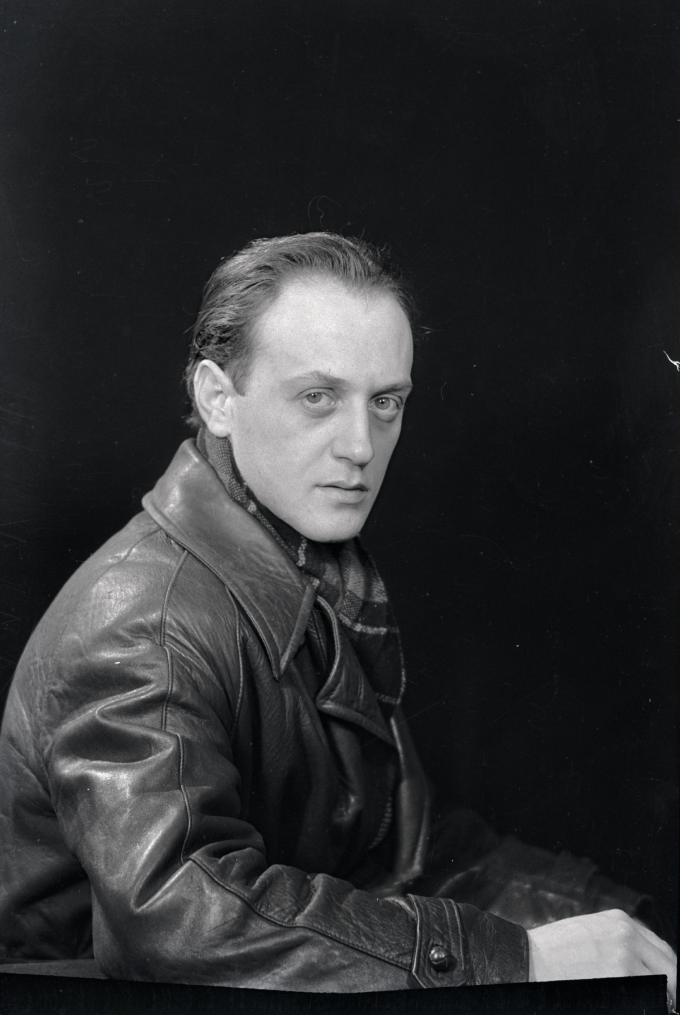
Man RAY, Victor Brauner, vers 1933. Don de M. Lucien Treillard, 1995. © Man Ray Trust – Adagp, Paris © Centre Pompidou, MNAM-CCI – Dist. RMN-GP

On the occasion of the “Timisoara European Capital” event, a retrospective Victor Brauner will be organized at the beginning 2023 to pay tribute to this great artist in his native country.
Born in 1903 in Piatra Neamț (Moldova), Victor Brauner actively participated from the 1920s in the Bucharest avant-garde of which he became one of the main representatives. His conversion to Surrealism took place gradually between the first stay (1925-1926) and the second stay in Paris (1930-1935) of the artist, who joined the movement of André Breton in the autumn of 1933. Following an accident in 1938, Brauner lost an eye and became, for the surrealists, the “visionary” painter, capable of premonition. This enucleation had been painted in his Self-Portrait in 1931, seven years earlier.
Victor Brauner, who settled permanently in France in 1938, is one of the greatest artists of surrealism. He is also an artist apart in the story of art with an original work, complex, erudite, full of humor and inventions, and nourished by his Romanian origins, the most secret esotericisms, German Romantics, parietal art and primitive arts.

Born in 1903 in Piatra Neamț (Kingdom of Romania), Victor Brauner actively participated from the 1920s in the Bucharest avant-garde, becoming one of the prominent representatives. His conversion to surrealism took place gradually between his first stay (1925-1926) and his second stay in Paris (1930-1935) when he joined André Breton’s movement in the autumn of 1933. Following an accident in 1938, Brauner lost an eye and became, for the surrealists, the “visionary” painter capable of premonition. This enucleation had been painted in his Self-Portrait in 1931, seven years earlier.
Victor Brauner, who settled permanently in France in 1938, is one of the greatest artists of surrealism. He is also a sui generis artist in the history of art with an original, complex, erudite, full of humour and inventions work, nourished by his Romanian origins, the most secret esotericisms, German Romantics, parietal art, and primitive arts.
— Camille Morando

Man RAY, Victor Brauner, vers 1933. Don de M. Lucien Treillard, 1995.
© Man Ray Trust – Adagp, Paris © Centre Pompidou, MNAM-CCI – Dist. RMN-GP

Man RAY, Victor Brauner, vers 1933. Don de M. Lucien Treillard, 1995. © Man Ray Trust – Adagp, Paris © Centre Pompidou, MNAM-CCI – Dist. RMN-GP

On the occasion of the “Timisoara European Capital” event, a retrospective Victor Brauner will be organized at the beginning 2023 to pay tribute to this great artist in his native country.
Born in 1903 in Piatra Neamț (Moldova), Victor Brauner actively participated from the 1920s in the Bucharest avant-garde of which he became one of the main representatives. His conversion to Surrealism took place gradually between the first stay (1925-1926) and the second stay in Paris (1930-1935) of the artist, who joined the movement of André Breton in the autumn of 1933. Following an accident in 1938, Brauner lost an eye and became, for the surrealists, the “visionary” painter, capable of premonition. This enucleation had been painted in his Self-Portrait in 1931, seven years earlier.
Victor Brauner, who settled permanently in France in 1938, is one of the greatest artists of surrealism. He is also an artist apart in the story of art with an original work, complex, erudite, full of humor and inventions, and nourished by his Romanian origins, the most secret esotericisms, German Romantics, parietal art and primitive arts.

On the occasion of the “Timisoara European Capital” event, a retrospective Victor Brauner will be organized at the beginning 2023 to pay tribute to this great artist in his native country.
Born in 1903 in Piatra Neamț (Moldova), Victor Brauner actively participated from the 1920s in the Bucharest avant-garde of which he became one of the main representatives. His conversion to Surrealism took place gradually between the first stay (1925-1926) and the second stay in Paris (1930-1935) of the artist, who joined the movement of André Breton in the autumn of 1933. Following an accident in 1938, Brauner lost an eye and became, for the surrealists, the “visionary” painter, capable of premonition. This enucleation had been painted in his Self-Portrait in 1931, seven years earlier.
Victor Brauner, who settled permanently in France in 1938, is one of the greatest artists of surrealism. He is also an artist apart in the story of art with an original work, complex, erudite, full of humor and inventions, and nourished by his Romanian origins, the most secret esotericisms, German Romantics, parietal art and primitive arts.

Man RAY, Victor Brauner, vers 1933. Don de M. Lucien Treillard, 1995. © Man Ray Trust – Adagp, Paris © Centre Pompidou, MNAM-CCI – Dist. RMN-GP
1903
Born on June 15, in Piatra Neamț (Moldavia), Romania, in a Jewish family.
1919–1922
He enrols in the School of Fine Arts in Bucharest.
1923–1924
Bonds with Ilarie Voronca, with whom he invents the “pictopoésie” in 1924, in the magazine
75 HP.
Becomes one of the main figures of the Romanian avant-garde. First personal exhibition.
1925–1926
First stay in Paris: he frequents Robert Delaunay, Marc Chagall, Voronca, Benjamin Fondane
and Claude Sernet. Probably visits the exhibition “La peinture surréaliste.”
1929
Participates in the Art Nouveau group exhibition, with his first works of surrealist inspiration.
1930–1935
Second stay in Paris: he frequents Brâncuși, Jacques Hérold, Alberto Giacometti and Yves Tanguy. In 1933, he meets André Breton and adheres to surrealism. In 1934, his first personal exhibition in Paris. In 1935, returns to Bucharest for a personal exhibition.
1938
International exhibitions of surrealism in Paris and Amsterdam. Settles in Paris. During the night of August 27 to 28, accidentally loses his left eye.
1940–1945
Flees to Marseille, to Villa Air-Bel, with the surrealists, waiting for a visa to leave France. Not obtaining it, he takes refuge in the Hautes-Alpes.
1945
Returns to Paris and settles in rue Perrel, in the former studio of Douanier Rousseau.
1947
First personal exhibition in New York. International exhibitions of surrealism in Paris, then in Prague.
1948
Stays in Switzerland, to escape the threats of expulsion concerning Romanians in an irregular situation. Is excluded from the surrealist group.
1957–1958
His personal exhibitions are multiplying in Paris and abroad.
1959
Moves to rue Lepic. Officially rejoins the Breton group and participates in the Exposition inteRnatiOnale du Surréalisme (EROS) in Paris.
1965
Begins the two cycles “Mythologies” and “Fêtes des Mères.” First retrospective in Vienna (itinerant in Hanover, Hagen and Amsterdam)
1966
Dies in Paris on March 12, after a long illness. His work represents France at the Venice Biennale
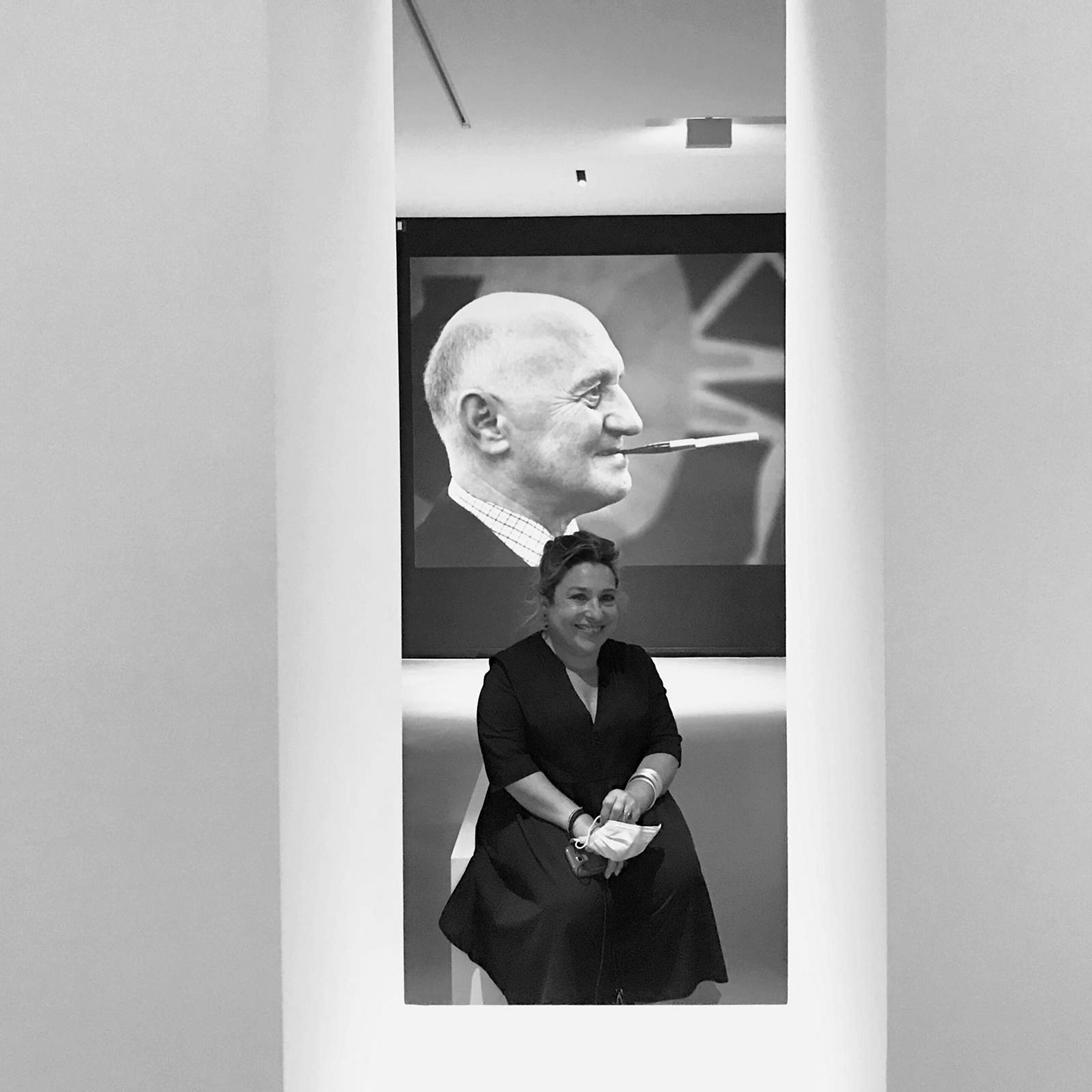
CAMILLE MORANDO
Camille Morando is head of Information and Research on Modern Collections at MNAM-CCI, Centre Pompidou. Professor at École du Louvre (Paris), Mrs. Morando curated, with Jeanne Brun and Sophie Krebs, the monographic exhibition Victor Brauner, Je suis le rêve. Je suis l’inspiration, 2020, Musée d’Art Moderne de Paris.
The academic interest of Mrs. Morando in Brauner is an older one, her first contact dating back to her Ph.D. years. In 2002, as a resident at the National Institute of Art History (INHA, Paris), she was entrusted with publishing the Victor Brauner archives with Sylvie Patry, from which the reference volume Victor Brauner: Écrits et correspondances, 1938–1948 came out (Centre Pompidou/INHA, 2005).
The collection bequeathed by Brauner’s widow to the French state (a large part of whose artworks were donated to the MNAM-CCI with all the archives from Brauner at the Kandinsky Library, at Centre Pompidou) allowed Camille Morando to delve deeper into Victor Brauner’s biography and work. With over two decades of research behind her, Mrs. Morando is today one of the world’s most renowned experts on Victor Brauner. In 2019, Camille Morando edited and published with Arta Grafica a Victor Brauner 1903-1966 art catalog. It was a collection born from a never happened exhibition but meant as the artist’s first retrospective in his native country. Meanwhile, the volume has become a reference point in the literature on Brauner.
CATALOG
Edited by Camille Morando, the bilingual Catalogue (Romanian/English) comprises original texts on Brauner and his works by (Romanian, French, and American) specialists, an analytical biography and biographical notes on Victor Brauner’s Romanian friends.
The five essays entrusted to Cătălin Davidescu, Catherine Hansen, Radu Stern, Bernard Blistène, and Camille Morando deal with Brauner’s place in Romania, from his beginnings in the 1920s in Bucharest to his possible influence on the current scene.
With a didactic purpose, the thirteen texts by Irina Cărăbaș and Camille Morando describe the works present in the exhibition and analyse the influences and inventions of drawings, paintings, and sculptures, evoking the historical, biographical, and artistic context of Victor Brauner, in Romania and France, from the beginning of the 1920s to 1965.
In the appendices, the illustrated biography was established by Camille Morando from archival funds to recount the artist’s life and work. The biographical notes present the Romanian friends of Victor Brauner (Théodore Brauner, Benjamin Fondane, Jacques Hérold, Gherasim Luca, Gellu Naum, Paul Păun, Jules Perahim, Hedda Sterne, Tristan Tzara, and Ilarie Voronca), whose creations testify to the exceptional influence of Romanian avant-garde and the numerous productions in Romania and France.
Catalog coordinated by Camille Morando (Centre Pompidou)
Co-edited by Graphic Art and Art Encounters
Authors: Cătălin Davidescu, Catherine Hansen, Radu Stern, Bernard Blistène, Camille Morando, Irina Carăbaș, Diana Marincu, Andreea Foanene
Translations by Mirela Iacob
Release year: 2023
Available at La Doua Bufniţe Library, Cărturești and Humanitas.
THE TEAM
Curator: Camille Morando
Project Manager: Elvira Lupșa
Architect: Attila KIM Architects
Graphic Designer: Ștefan Lucuț
Consiliul Județean Timiș
President: Alin Nica
Dan Diaconu, Loredana Lungu, Ionuț Sîrbu
Centre Pompidou
President: Laurent Le Bon
Director: Xavier Rey
Rafaël Grynberg, Mariolina Cilurzo, Sophie Spalek, Clotilde Cooper
Muzeul Național de Artă Timișoara
General Manager: Filip Petcu
Project Management: Aura Bălănescu
Andreea Foanene, Diana Vlad, Dan Șerban, Nuți Dinuț, Marius Kovacs, Paula Gampe Crăciunescu, Mihaela Irimescu, Izabela Andronache, Daniela Viruzab, Mihaela Otînjac
Fundația Art Encounters
President: Ovidiu Șandor
Diana Marincu, Ioana Gonțea, Națca Vaszilcsin, Daniel Gagiu, Oana Chirilă, Marius Stan, Germina Ion, Attila Erdei, Matei Ungureanu, Alina Bernecker, Alisa Popa, Gavril Pop
Institut Français de Roumanie
Head of Cooperation and Culture: Julien Chiappone-Lucchesi
Director Institutul Francez filiala Timișoara / French Institute Timisoara branch: Tilla Rudel
Flaminia Prodan, Roxana Bucur, Sabina Prundeanu
With loans from: Centre Pompidou, Muzeul Naţional de Artă al României, Musée d’art moderne et contemporain – Saint-Étienne Métropole, Musée Cantini, Institutul de Cercetări Eco-Muzeale „Gavrilă Simion“ Tulcea, Muzeul Țării Crișurilor, Muzeul de Artă Vizuală Galaţi, Béatrix & Christian DERVELOY Collection
